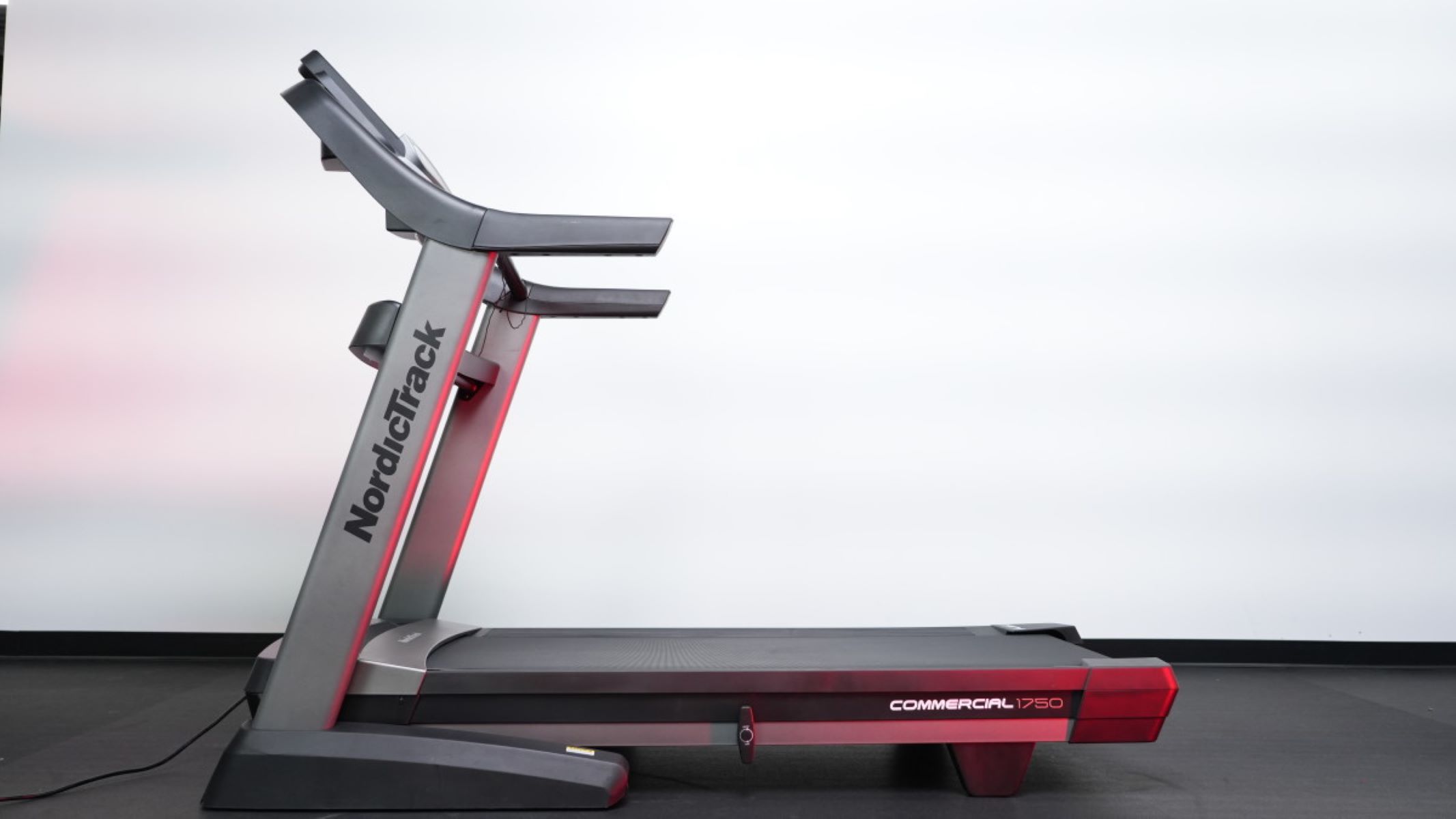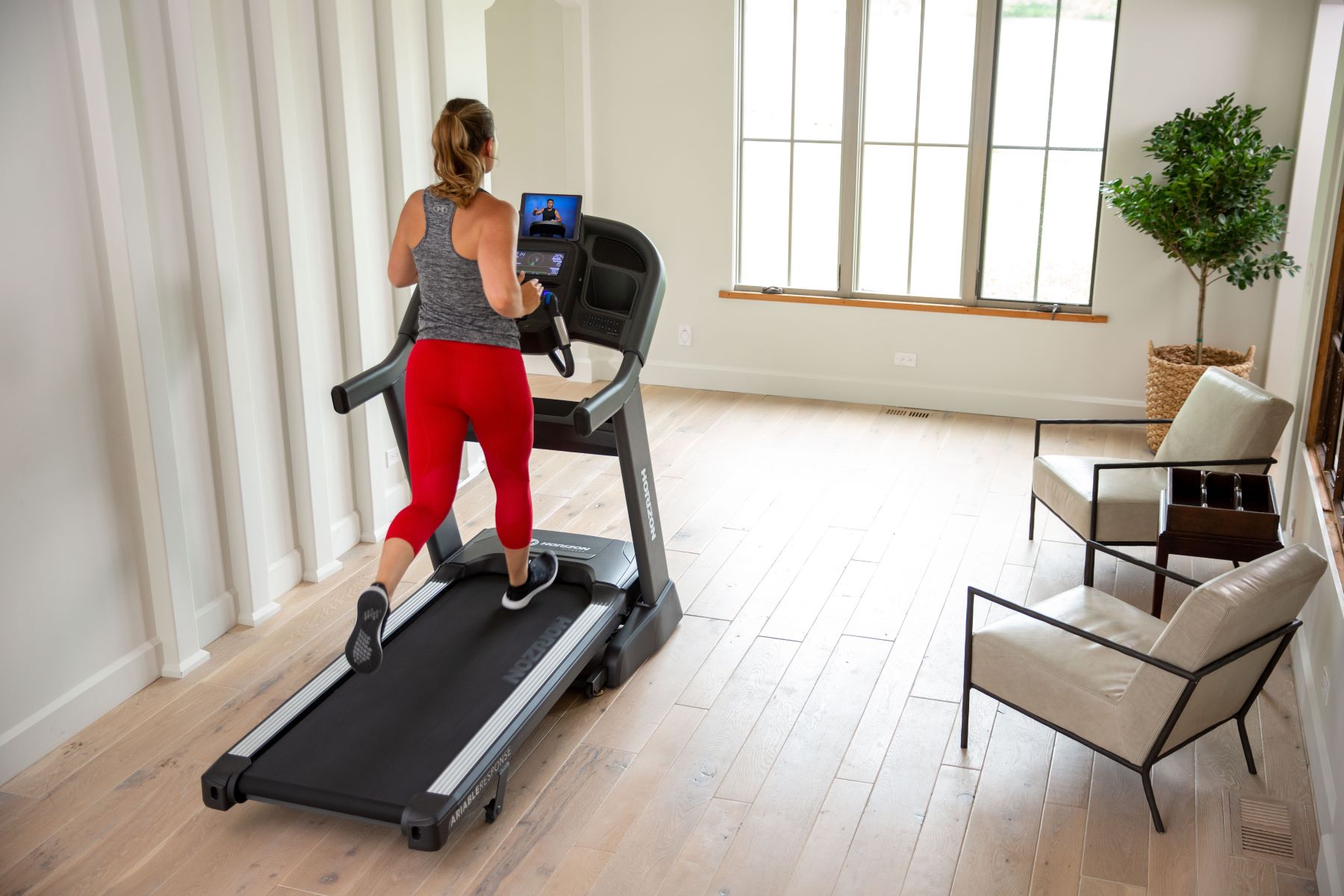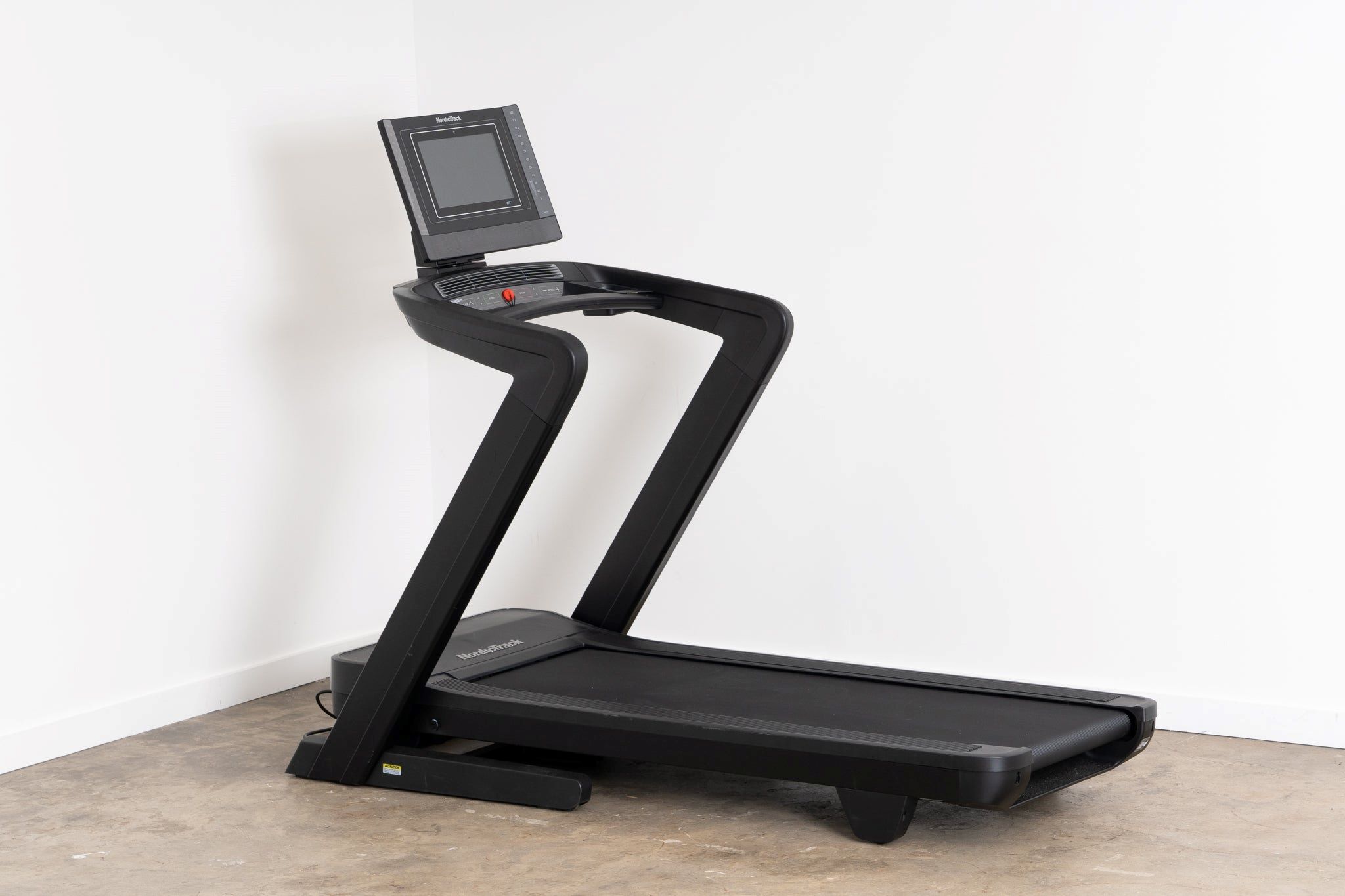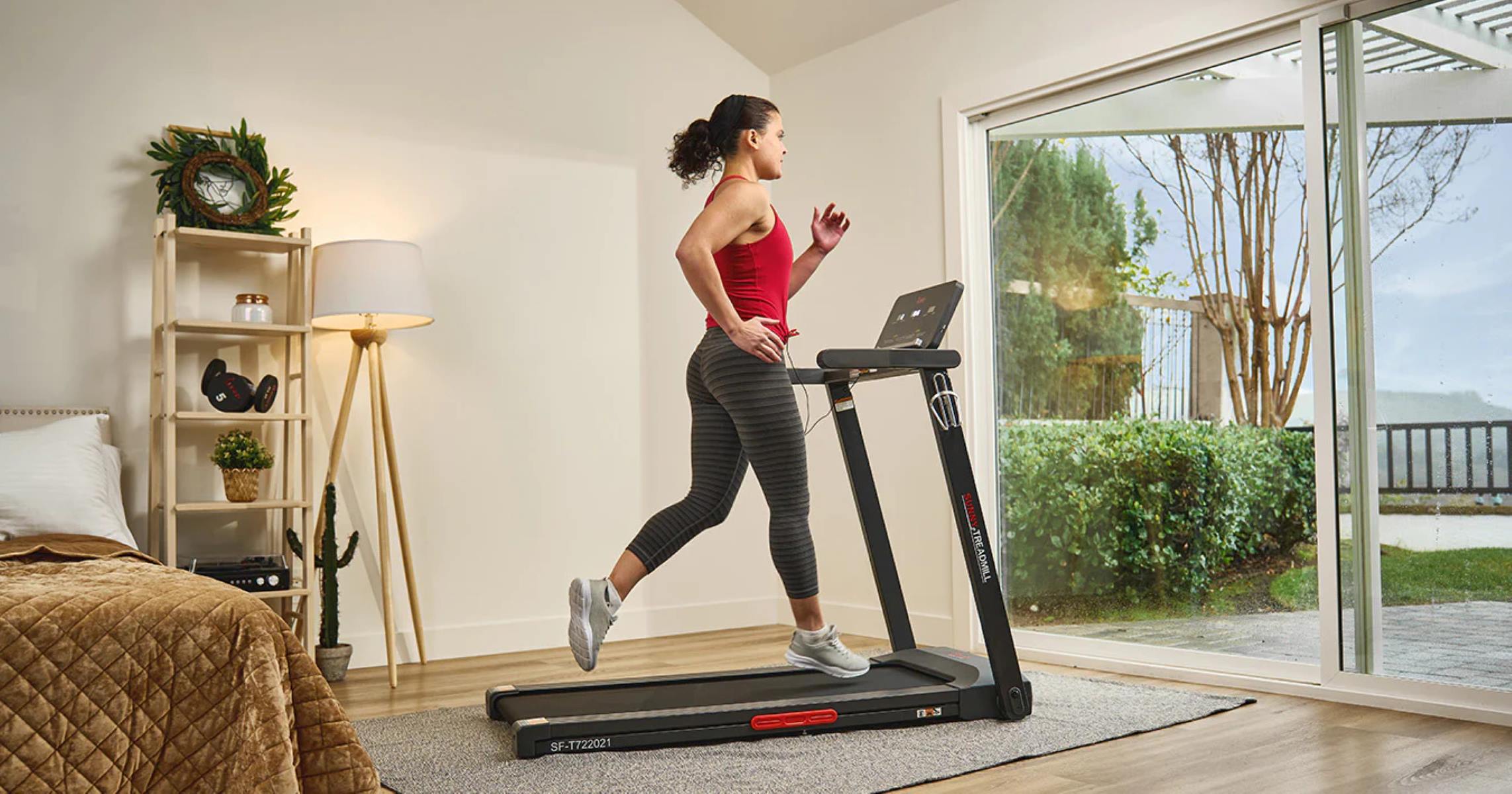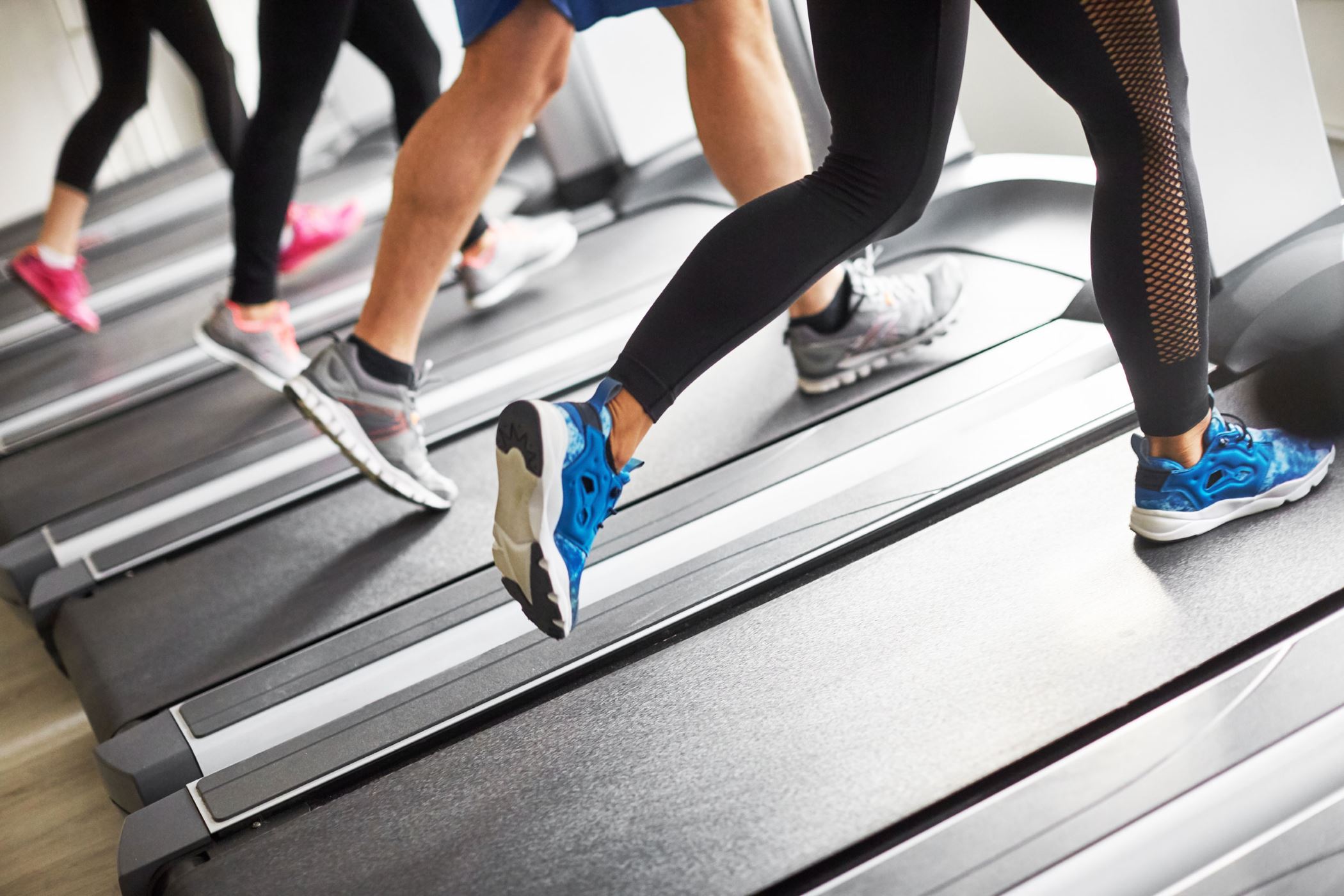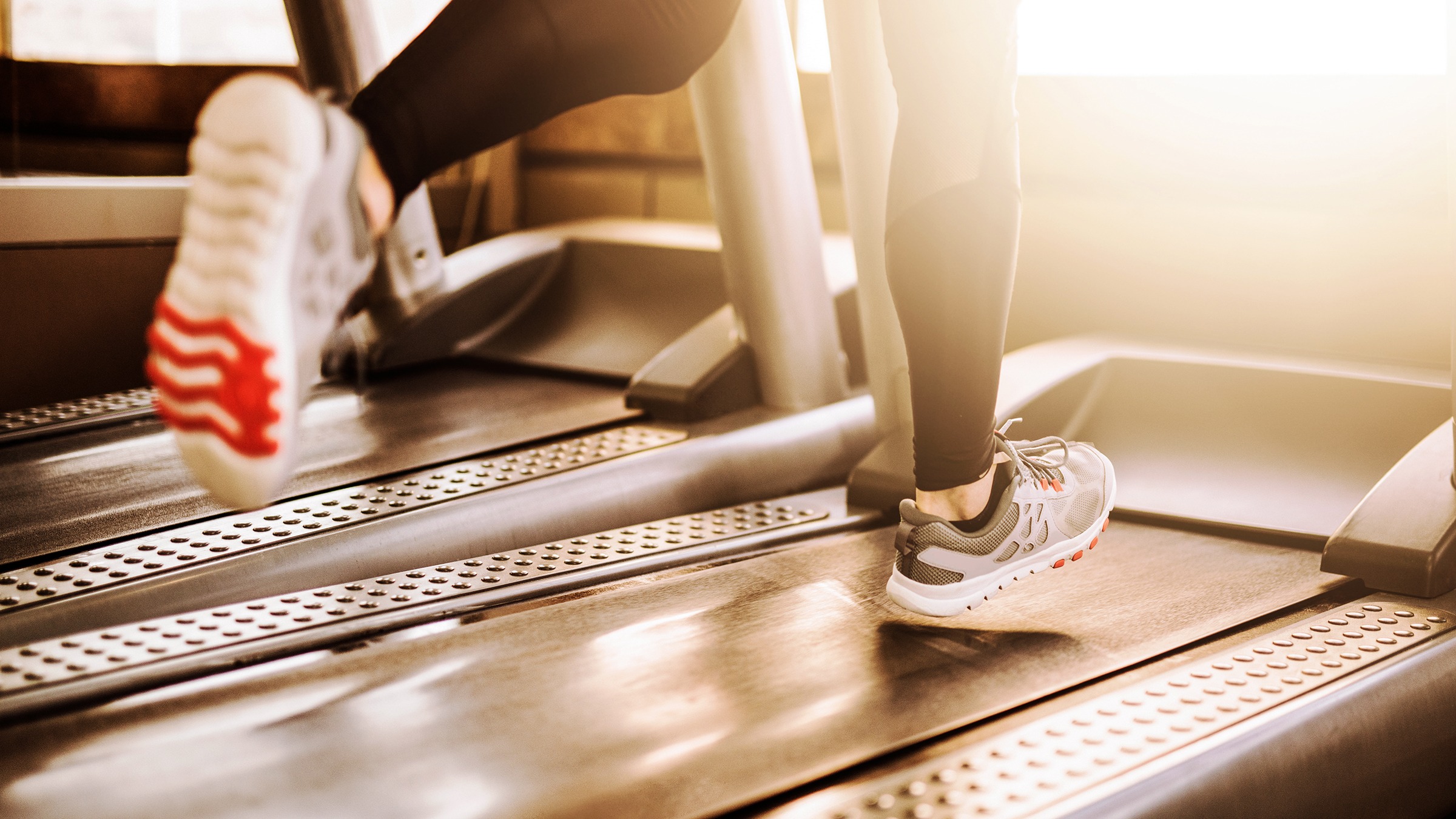Home>Misc>Featured>How Much Weight Can You Lose On Treadmill


Featured
How Much Weight Can You Lose On Treadmill
Modified: August 21, 2023
Discover the featured weight loss benefits of using a treadmill and find out how much weight you can lose with this effective exercise machine. Reach your fitness goals today!
Introduction
Welcome to the world of treadmills, where you can shed those extra pounds and achieve your weight loss goals in the comfort of your own home or at the gym. Treadmills have become a popular choice for people looking to lose weight due to their convenience, versatility, and effectiveness. Whether you are a beginner or an experienced exerciser, a treadmill can be a valuable tool in your weight loss journey.
Walking, jogging, or running on a treadmill not only burns calories but also helps improve cardiovascular health, build strength, and tone muscles. It provides a low-impact workout option that reduces stress on your joints compared to exercises like running on concrete or asphalt. With the right approach, a treadmill can become your trusted companion in your weight loss journey.
In this article, we will explore the benefits of using a treadmill for weight loss, the factors that can affect your weight loss progress, how to calculate your potential weight loss, recommended treadmill workouts for weight loss, and safety tips for using a treadmill effectively and safely.
So, if you are ready to take the first steps towards a healthier, fitter you, let’s dive into the world of treadmill workouts and discover how much weight you can potentially lose on a treadmill.
Benefits of Using a Treadmill for Weight Loss
The treadmill offers numerous benefits when it comes to weight loss. Here are some key advantages that make it an effective tool in your weight loss journey:
- Calorie Burning: Using a treadmill allows you to burn a significant amount of calories. The intensity of your workout, combined with your speed and duration, determines the number of calories you burn. Running or jogging at a faster pace will burn more calories compared to walking.
- Cardiovascular Health: Treadmill workouts elevate your heart rate, promoting cardiovascular health. Regular aerobic exercise, such as using a treadmill, can improve your heart and lung function, lower blood pressure, and reduce the risk of cardiovascular diseases.
- Convenience and Accessibility: The treadmill offers the convenience of exercising indoors, regardless of the weather conditions. It is easily accessible, making it suitable for those with busy schedules or limited outdoor exercise options.
- Customizability: Treadmills offer various customizable features, including speed, incline, and pre-set workout programs. You can adjust these settings to match your fitness level and weight loss goals, ensuring a personalized and effective workout.
- Joint Impact Reduction: Unlike outdoor running on hard surfaces, treadmills provide a more forgiving surface that reduces the impact on your joints. This is especially beneficial for individuals with joint pain or conditions like arthritis, allowing them to exercise without aggravating their symptoms.
- Motivation and Progress Tracking: Many treadmills are equipped with features like built-in fitness trackers and virtual training programs. These tools can help you stay motivated, set goals, and track your progress, making your weight loss journey more engaging and rewarding.
With these incredible benefits, it’s no wonder treadmills have become a popular choice for individuals who want to lose weight. In the next section, we will explore the various factors that can influence your weight loss results on a treadmill.
Factors That Affect Weight Loss on a Treadmill
When using a treadmill for weight loss, several factors come into play that can affect your results. Understanding these factors can help you optimize your workouts and maximize your weight loss potential. Let’s take a closer look at them:
- Workout Intensity: The intensity of your treadmill workout plays a crucial role in weight loss. Higher intensity workouts, such as interval training or HIIT (High-Intensity Interval Training), can burn more calories and stimulate your metabolism, leading to greater weight loss.
- Duration of Workout: The duration of your treadmill workout also affects how many calories you burn and subsequently, your weight loss. Longer workouts typically result in more calorie burn, but it’s important to find a balance that suits your fitness level, goals, and schedule.
- Speed and Incline: Walking, jogging, or running at a higher speed or incline on the treadmill increases the intensity and difficulty of your workout. This can boost your calorie burn and elevate your heart rate, contributing to weight loss.
- Consistency: Consistency is key when it comes to weight loss. Regularly using a treadmill and sticking to a workout routine will yield better results compared to sporadic workouts. Aim for at least three to five treadmill sessions per week for optimal weight loss.
- Diet and Nutrition: Weight loss is not just about exercise; your diet and nutrition play a vital role as well. Incorporating a healthy, balanced diet alongside your treadmill workouts will enhance your weight loss efforts. Focus on consuming whole, nutrient-dense foods and controlling portion sizes to create a calorie deficit.
- Body Composition and Metabolism: Each individual’s body composition and metabolism are unique and can influence weight loss results. Factors such as age, gender, genetics, and muscle mass can affect how your body responds to treadmill workouts. However, consistent exercise and healthy habits can still lead to successful weight loss.
It’s important to note that weight loss is a multifaceted process, and the factors mentioned above interact with each other. Finding the right combination that works for you is essential. In the next section, we will discuss how to calculate your potential weight loss on a treadmill.
How to Calculate Potential Weight Loss on a Treadmill
Calculating your potential weight loss on a treadmill involves considering various factors, including your current weight, exercise intensity, duration, and diet. While it’s important to remember that everyone’s weight loss journey is unique, the following steps can help you estimate your potential weight loss:
- Calculate your daily calorie intake: Start by determining your basal metabolic rate (BMR), which is the number of calories your body needs to maintain its current weight at rest. There are online calculators available that can help you determine your BMR based on your age, sex, weight, and height. Once you have your BMR, factor in your activity level to find your estimated daily calorie intake.
- Identify your weight loss goal: Determine how much weight you want to lose over a specific period. Keep in mind that a safe and sustainable weight loss is 1-2 pounds per week. This equates to a calorie deficit of about 500-1000 calories per day.
- Calculate the calories burned on the treadmill: Use the calorie burn estimator on your treadmill or refer to a reliable online calculator to determine the number of calories you burn during your treadmill workout. Remember to input accurate information such as your body weight, speed, and incline to get a more precise estimate.
- Adjust your diet: To create a calorie deficit and promote weight loss, adjust your daily calorie intake. Subtract the calories burned on the treadmill from your estimated daily calorie intake to determine your daily calorie deficit. It’s important to strike a balance between creating a calorie deficit and providing your body with enough fuel and nutrients.
- Monitor your progress: Track your weight loss progress over time. Keep in mind that weight loss may not always be linear, and factors like water retention, muscle gain, and fluctuations in metabolism can influence the numbers on the scale. Focus on overall trends and how you feel rather than getting too fixated on daily fluctuations.
Remember, the calculation above serves as a general guide, and individual results may vary. It’s important to approach weight loss holistically, combining exercise, diet, and healthy habits for sustainable and long-term success.
Next, we will explore some recommended treadmill workouts specifically designed for weight loss.
Recommended Treadmill Workouts for Weight Loss
When it comes to maximizing weight loss on a treadmill, incorporating a mix of cardiovascular workouts and interval training can be highly effective. Here are some recommended treadmill workouts that can help you achieve your weight loss goals:
- Steady-State Cardio: This workout involves maintaining a consistent pace for an extended period. Start with a warm-up at a comfortable walking pace, gradually increase your speed to a moderate intensity, and sustain that pace for 30-60 minutes. Steady-state cardio helps burn calories and improves cardiovascular fitness.
- Interval Training: Intervals involve alternating between periods of high intensity and lower intensity or rest. A popular interval training method is the High-Intensity Interval Training (HIIT) workout. Start with a warm-up, then alternate between short bursts of maximum effort (sprinting or running at a challenging pace) and active recovery periods (walking or jogging at a slower pace). Repeat this cycle for 15-30 minutes. Intervals help boost metabolism, increase calorie burn, and improve cardiovascular fitness.
- Incline Workouts: Adding incline to your treadmill workouts can intensify the challenge and burn more calories. Gradually increase the incline throughout your workout or perform intervals of incline running or power-walking. Incline workouts engage different muscle groups and help tone the lower body while increasing calorie expenditure.
- HIIT Tabata: Tabata workouts are a specific form of HIIT that involves performing high-intensity exercises for 20 seconds, followed by 10 seconds of rest, repeated for a total of 8 rounds. On the treadmill, you can perform 20 seconds of sprinting or running at maximum effort, followed by 10 seconds of rest or walking. Repeat this cycle for 4 minutes, then recover and repeat for additional rounds if desired.
- Hill Sprints: Find a treadmill program that simulates hill inclines or manually increase the incline to a challenging level. Sprint at maximum effort for a predetermined time (e.g., 30 seconds), then recover by walking or jogging at a lower intensity. Repeat this cycle for 10-15 minutes. Hill sprints engage multiple muscle groups, boost metabolism, and burn calories.
Remember to start slowly and gradually increase the intensity of your workouts as your fitness level improves. It’s also important to listen to your body and rest when necessary to avoid overexertion or injury.
Now that you have an idea of recommended treadmill workouts, let’s move on to the next section, which focuses on safety tips for using a treadmill effectively.
Safety Tips for Using a Treadmill
While treadmills offer a safe and controlled environment for exercise, it’s important to prioritize safety to prevent injuries and ensure a pleasant workout experience. Here are some essential safety tips to keep in mind when using a treadmill:
- Warm-Up and Cool-Down: Begin each treadmill workout with a proper warm-up to prepare your muscles and cardiovascular system for exercise. Similarly, end your workout with a cool-down to gradually reduce your heart rate and allow for recovery.
- Correct Form: Maintain proper form while walking, jogging, or running on the treadmill. Keep your head up, shoulders relaxed, and core engaged. Avoid leaning too far forward or backward, as this can strain your muscles and affect your balance.
- Start Slowly: If you’re new to using a treadmill or returning after a break, start with a comfortable pace and gradually increase the intensity and duration of your workouts. Give your body time to adapt and avoid pushing yourself too hard too soon.
- Use Safety Features: Familiarize yourself with the safety features of your treadmill, such as the emergency stop button or safety tether. These features can be crucial in case of imbalance or if you need to stop the treadmill suddenly.
- Proper Footwear: Wear supportive and cushioned footwear while using a treadmill to provide stability, absorb shock, and reduce the risk of foot or leg injuries. Avoid exercising barefoot or wearing unsuitable shoes.
- Hydrate: Stay hydrated before, during, and after your treadmill workouts. Keep a water bottle nearby and take regular sips to replenish fluids lost through sweat.
- Monitor Heart Rate: Utilize the heart rate monitoring feature on your treadmill or wear a heart rate monitor to stay within a safe and effective heart rate zone during your workouts. This can help you gauge the intensity and adjust your pace accordingly.
- Avoid Distractions: Stay focused and minimize distractions while using a treadmill. Avoid using your phone, reading, or watching TV excessively, as this can compromise your balance and attention to the workout.
- Listen to Your Body: Pay attention to your body’s signals during your treadmill workout. If you experience any pain, dizziness, or shortness of breath, stop exercising and seek medical advice if necessary. Pushing through discomfort can lead to injuries or other health complications.
- Maintain Treadmill Safety: Regularly check and maintain your treadmill to ensure its safe operation. Lubricate the belt, clean the machine, and follow the manufacturer’s guidelines for upkeep and maintenance.
Following these safety tips will help you make the most of your treadmill workouts while reducing the risk of accidents or injuries. Always prioritize safety and listen to your body’s needs.
As we wrap up this article, we hope you have gained valuable insights and motivation to embark on your weight loss journey using a treadmill. Remember to consult with a healthcare professional before starting any new exercise regimen, especially if you have existing health conditions or injuries.
Conclusion
Congratulations! You have reached the end of this comprehensive guide to using a treadmill for weight loss. Treadmills offer a convenient and effective way to shed those extra pounds, improve cardiovascular health, and enhance overall fitness. By incorporating the recommended workouts, considering the factors that affect weight loss, and following safety precautions, you can optimize your treadmill workouts and make significant progress towards your weight loss goals.
Remember, weight loss is a journey that requires consistency, dedication, and patience. Each person’s experience will be unique, so it’s important to listen to your body, set realistic goals, and seek progress rather than perfection.
Alongside regular treadmill workouts, remember to maintain a healthy diet, stay hydrated, and prioritize overall well-being. Getting proper rest, managing stress levels, and incorporating strength training and other forms of exercise can complement your treadmill workouts for better results and overall fitness.
As you embark on your treadmill weight loss journey, track your progress, celebrate milestones, and stay motivated. Fitness is not just about numbers on a scale; it’s about how you feel, the lifestyle changes you adopt, and the confidence and energy you gain.
So, lace up your shoes, hop on the treadmill, and start making strides towards a healthier, fitter, and happier version of yourself. Remember, it’s never too late to start, and every step counts!
Wishing you success and enjoyment on your treadmill weight loss journey!
